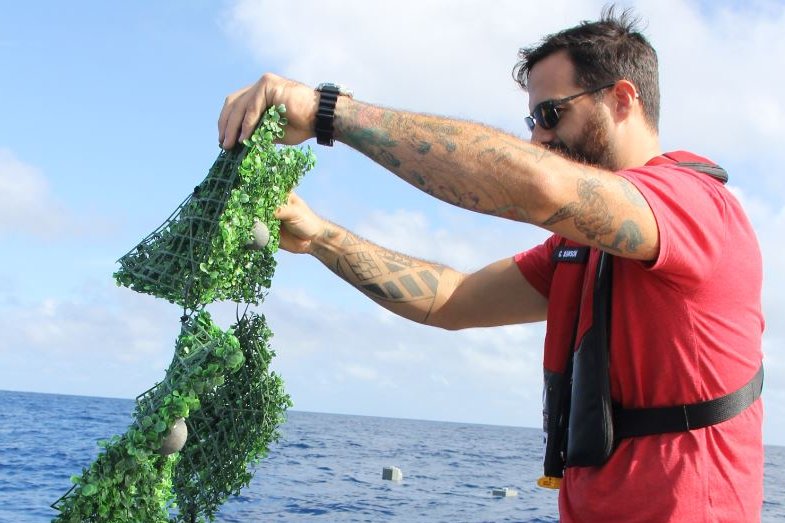Researchers find new way to predict where ocean trash, seaweed will go

Researchers with National Oceanic and Atmospheric Administration deploy plastic mats in the Caribbean in 2019 as part of a study on the movement of floating items by University of Miami's Rosentstiel School of Marine and Atmospheric Science. Photo courtesy of NOAA
ORLANDO, Fla., March 19 (UPI) -- Researchers in Florida have devised a new method to predict where ocean trash, seaweed or even wrecked ships and planes will drift, potentially boosting efforts to clean up huge ocean garbage patches twice the size of Texas.
Scientists at the University of Miami employed buoys to test new mathematical models for predicting how wind, current and buoyancy determine the speed and direction of objects in the ocean. The buoys moved almost exactly as predicted.
The new models could aid cleanup of trash like the Great Pacific garbage patch, an area of plastic trash accumulation that is more than 600,000 square miles. The research also might aid efforts to provide forecasts for seaweed pileups in tourism areas.
"Our work will aid strategies to help clean up the oceans," said Maria Josefina Olascoaga, an associate professor of ocean sciences at the university's Rosenstiel School of Marine and Atmospheric Science.
Research into the movement of trash at sea has grown in recent years, with significant advancements. Models, for example, successfully predicted the arrival in Hawaii of debris from the 2011 Japan tsunami.
The findings from the Rosenstiel School's science provide another model, and could be used to determine which beaches will get ocean litter, said George Leonard, chief scientist at the non-profit Ocean Conservancy, which advocates for the protection of marine resources.
"It does appear to me that [the Rosenstiel School research] could provide insights about where the bigger stuff like fishing gear goes, especially," Leonard said. "Most trash doesn't float. It's been determined that you can only see about 3 percent of the plastic that goes into the ocean every year."
Next up for the Rosenstiel School's research is another study on how seaweed moves in the Gulf Stream, a strong ocean current just off Florida's southeast coast.
Record amounts of smelly seaweed caused historic damage to beaches and reduced tourism in 2019 in Florida, Mexico and the Caribbean.
"The dynamics of stuff that floats on the surface of the ocean is different than the ocean currents," said Olascoaga's research partner, Francisco Beron-Vera, associate professor at the Rosenstiel School. "We found that the buoyancy of an object has more effect on its trajectory than other factors -- more than radius, shape or immersion depth."
No comments:
Post a Comment